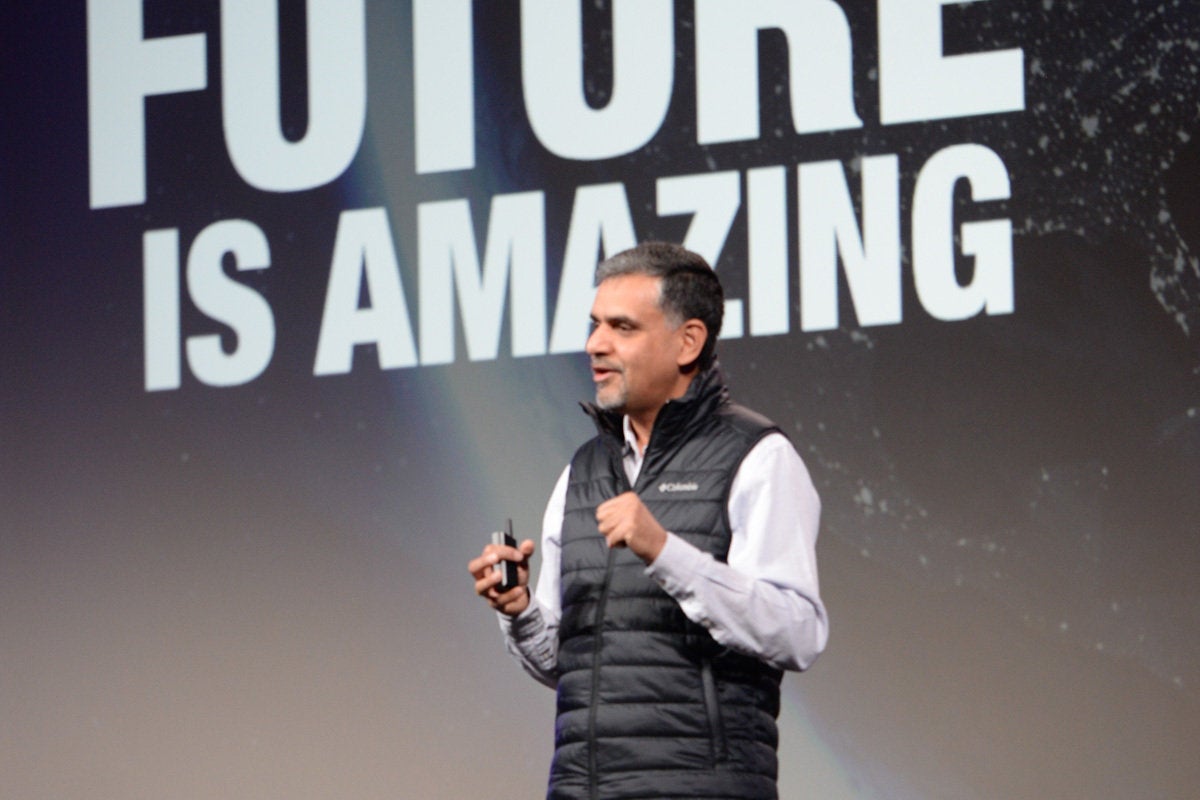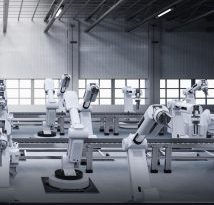HPE’s vision for the intelligent edge

It’s not just speeds and feeds anymore, it’s intelligent software, integrated security and automation that will drive the networks of the future.
That about sums up the networking areas that Keerti Melkote, HPE’s President, Intelligent Edge, thinks are ripe for innovation in the next few years.He has a broad perspective because his role puts him in charge of the company’s networking products, both wired and wireless.
“On the wired side, we are seeing an evolution in terms of manageability,” said Melkote, who founded Aruba, now part of HPE. “I think the last couple of decades of wired networking have been about faster connectivity. How do you go from a 10G to 100G Ethernet inside data centers? That will continue, but the bigger picture that we’re beginning to see is really around automation.”
The challenge is how to inject automation into areas such as data centers, IoT and granting network access to endpoints. In the past, automation and manageability were afterthoughts, he said. “The wired network world never really enabled native management monitoring and automation from the get-go.”
Melkote said HPE is changing that world with its next generation of switches and apps, starting with a switching line the company introduced a little over a year ago, the Core Switch 8400 series, which puts the the ability to monitor, manage and automate right at the heart of the network itself, he said.
In addition to providing the network fabric, it also provides deep visibility, deep penetrability and deep automation capabilities. “That is where we see the wide network foundation evolving,” he said.
In the wireless world, speeds and capacity have also increased over time, but there remains the need to improve network efficiency for high-density deployments, Melkote said. Improvements with the latest generation of wireless, Wi-Fi 6, address this by focusing on efficiency and reliability and high-density connectivity, which are necessary given the explosion of wireless devices, including IoT gear, he said.
Artificial intelligence will also play a major role in how networks are managed, he said. “Behind the scenes, across both wired and wireless, AI and AI operations are going to be at the heart of how the vision of manageability and automation is going to be realized,” Melkote said.
AI operations are fundamentally about collecting large amounts of data from network devices and gaining insights from the data to predict when and where the network is going to face capacity and congestion problems that could kill performance, and to discover security issues, he said.
“Any one of those insights being able to proactively give our customers a view into what’s happening so they can solve a problem before it really becomes a big issue is a huge area of research and development for us,” Melkote said.
And that includes AI in wireless networks. “Even more than Wi-Fi 6, I see the evolution of AI behind the Wi-Fi 6 network or the next-generation wired network being really the enabler of the next evolution of efficiency, the next level of insights into the operations of the network,” he said.
From a security perspective, IoT poses a particular challenge that can be addressed in part via network features. “The big risk with IoT is that these devices are not secured with traditional operating systems. They don’t run Windows; they don’t run Linux; they don’t run an OS,” Melkote said. As a result, they are susceptible to attacks, “and if a hacker is able to jump onto your video camera or your IoT sensor, it can then use that to attack the rest of the internal network.”
That creates a need for access control and network segmentation that isolates these devices and provides a level of visibility and control that is integrated into the network architecture itself. HPE regards this as a massive shift from what enterprise networks have been used for historically – connecting users and taking them from Point A to Point B with high quality of service, Melkote said.
“The segmentation is, I think, the next big evolution for all the new use cases that are emerging,” Melkote said. “The segmentation not only happens inside a LAN context with Wi-Fi and wired technology but in a WAN context, too. You need to be able to extend it across a wide area network, which itself is changing from a traditional MPLS network to a software-defined WAN, SD-WAN.”
SD-WAN is one of the core technologies for enabling edge-to-cloud efficiency, an ever-more-important consideration given the migration of applications from private data centers to public cloud, Melkote said. SD-WAN also extends to branch offices that not only need to connect to data centers, but directly to the cloud using a combination of internet links and private circuits, he said.
“What we are doing is basically integrating the security and the WAN functionality into the architecture so you don’t have to rely on technology from third parties to provide that additional level of security or additional segmentation on the network itself,” Melkote said.
The edge of the network – or the intelligent edge – is also brings with it its own challenges. HPE says the intelligent edge entails analysis of data where it is generated to reduce latency, security risk and costs. It breaks intelligent edge types into three groups: operational technology, IT and IoT edges.
Part of the intelligent edge will include micro data centers that will be deployed at the point where data gets created, he said. “That’s not to say that the on-prem data center goes away or the cloud data center goes away,” Melkote said. “Those two will continue to be served, and we will continue to serve those through our switching/networking products as well as our traditional compute and storage products.”
The biggest challenge will be bringing these technologies to customers to deploy them quickly. “We are still in the early days of the intelligent-edge explosion. I think in a decade we’ll be talking about the edge in the same way we talk about mobility and cloud today, which is in the past tense – and they’re massive trends. The edge is going to be very similar, and I think we don’t say that yet simply because I don’t think we have enough critical mass and use cases yet.”
But ultimately, individual industustries will glean advantages from the intelligent edge, and it will spread, Melkote said.
“A lot of the early work that we’re doing is taking these building blocks of connectivity, security, manageability and analytics and packaging them in a manner that is consumable for retail use cases, for energy use cases, for healthcare use cases, for education use cases and workplace use cases,” he said. Every vertical has its own unique way to derive value out of this package. We are in the early days figuring that out.”
READ MORE HERE



